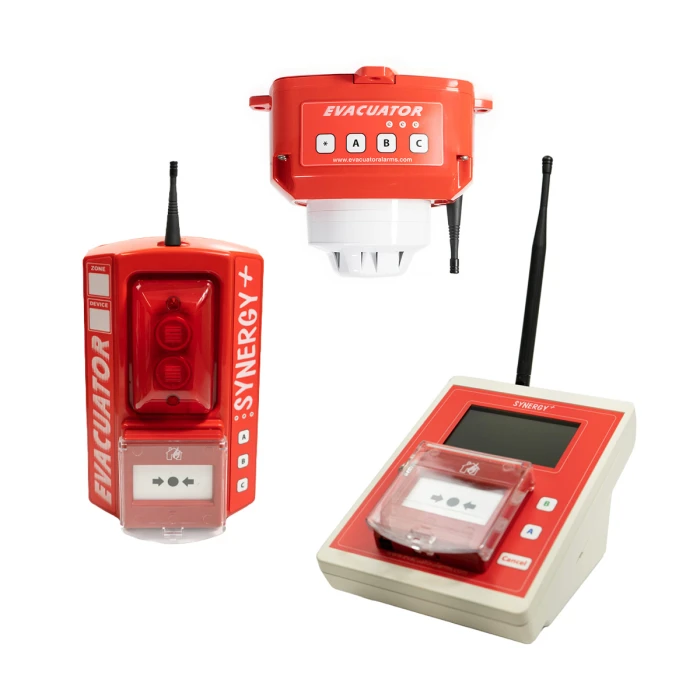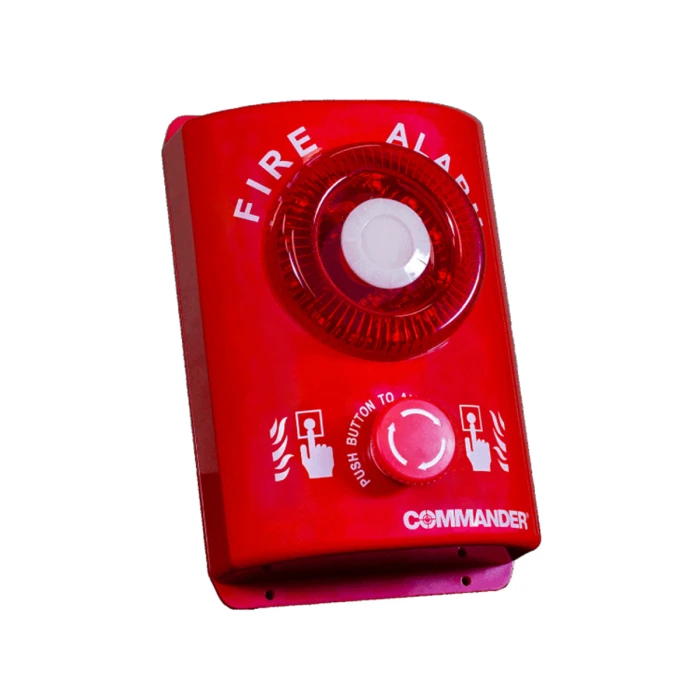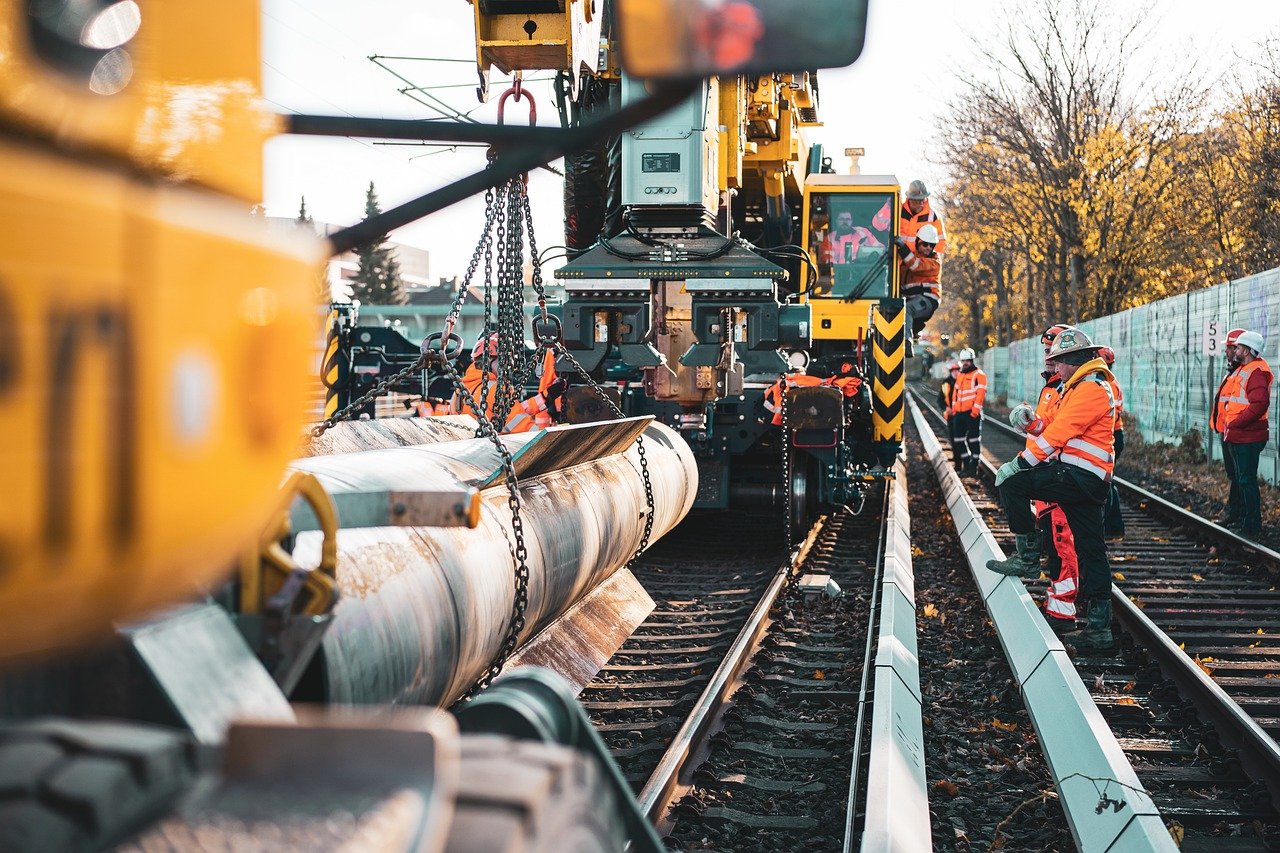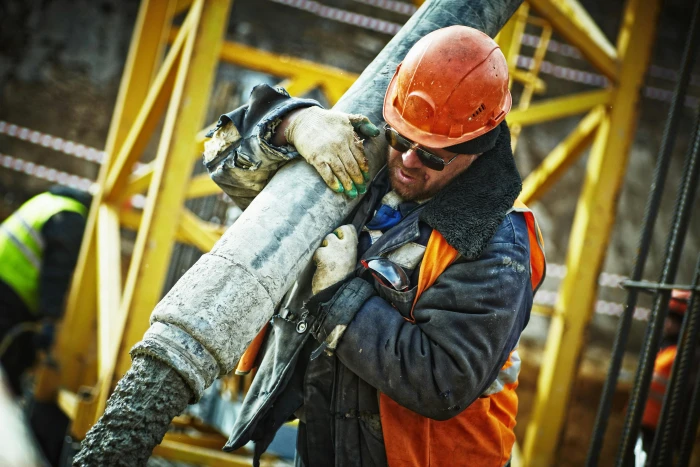
Need assistance?
Need Assistance? Call Us 0330 058 0631





















 Book a service
Book a service

02/07/2024 • by Lynsey B

Fire safety is a major concern in any construction project. Often temporary construction sites face unique challenges in ensuring effective fire safety. Typically, this is on building sites where wires cannot be installed easily. This is where temporary fire alarm systems, particularly wireless ones, come into play. Let’s explore the various aspects of temporary fire alarm systems in construction, the benefits of wireless systems and how they work.
A temporary construction site is any location where building, renovation or maintenance work is conducted on a non-permanent basis. These sites can vary significantly in size and complexity, ranging from small-scale residential projects to large commercial developments. The fleeting nature of these sites often means that traditional wired fire alarm systems are impractical. Often, they are impossible to install due to a lack of power infrastructure or the need to avoid running wires through unfinished structures.

Wireless systems are the go-to solution for temporary construction sites for several reasons. One of the primary factors is the lack of permanent power infrastructure in many temporary sites. In the early stages of construction, a stable and reliable power supply is often not available. This is where wireless fire alarm systems, which typically run on batteries, can be very useful. These systems can function independently away from a mains power source. Therefore, ensuring that fire safety measures are in place even when the site lacks a conventional electrical setup. This independence from the power grid is crucial for maintaining continuous fire protection from the moment construction begins until its completion.
Another significant advantage of wireless systems is the avoidance of running wires through the building. Construction sites are busy environments where structures are constantly evolving. Installing traditional wired fire alarm systems in such settings can be both dangerous and impractical. The process of running wires through a partially constructed building not only poses a risk of accidents but can also lead to damage to the incomplete structure. Wireless fire alarm systems eliminate these issues entirely. Without the need for extensive cabling, these systems reduce the potential for hazards and ensure that the integrity of the construction work is maintained. This makes wireless systems a safer and more practical choice for temporary construction sites.
Flexibility and portability are additional benefits that make wireless fire alarms particularly well-suited for construction sites. As the construction progresses, different areas of the site may require varying levels of fire protection. Wireless fire alarms can be easily relocated or reconfigured to match the changing needs of the site.

Wireless fire alarm systems offer several benefits that are specifically tailored to the unique needs of construction sites:
One of the primary advantages is the ease of installation. Unlike traditional wired systems, wireless alarms do not require extensive wiring or electrical work. This significantly reduces the time and effort needed to set up the fire detection system. Installation can be completed quickly, often within a few hours. Therefore, allowing construction activities to continue with minimal disruption. The absence of wiring also means that there is no need to drill holes or run cables through unfinished structures.
Cost-effectiveness is another major benefit of wireless fire alarm systems for temporary sites. The reduced need for labour and materials makes these systems a more economical choice compared to their wired counterparts. Without the necessity for extensive cabling and the associated labour costs, wireless systems can be installed at a fraction of the cost. This is particularly advantageous for large-scale construction projects where budget constraints are a significant consideration. Additionally, the cost savings are not just limited to the initial installation. Wireless systems also incur lower maintenance costs, as there are no physical cables. Often these can become damaged and require regular inspection and upkeep.
Scalability is a crucial feature of wireless fire alarm systems. This makes them ideal for the nature of construction projects. As the size and scope of the project change, the fire alarm system can be easily expanded or reduced in number to match the current requirements. For instance, if the construction site grows or new areas are added, additional wireless alarms can be added to the existing system. Conversely, if certain sections of the site are completed or no longer in use, the system can be scaled down accordingly.
Reliability is an important factor when it comes to fire safety and modern wireless fire alarm systems excel in this regard. These systems are designed with robust communication protocols that ensure prompt and accurate fire detection and alerting. Advanced wireless technology enables reliable signal transmission between the detectors and the central control panel. This high level of reliability ensures that any fire incidents are quickly detected.
Compliance with safety regulations is another significant benefit of using high-quality wireless fire alarm systems on construction sites. These systems are designed to meet rigorous safety standards, such as the BS5839 Part 1 and EN 54 certifications, which are required for legal compliance in the UK and Europe. Adhering to these standards ensures that the fire alarm system performs effectively and reliably.
Wireless fire alarm systems operate on the same principles as traditional wired systems. However, they utilise radio signals to communicate between devices rather than relying on physical wiring. This wireless communication offers significant advantages, especially in temporary site environments where wiring can be impractical.

The process begins with detection. Wireless fire alarm systems are equipped with various detectors, such as smoke detectors, heat detectors or manual call points. When these detectors identify signs of fire, such as smoke or an unusual rise in temperature, they initiate the alarm process. Once a detector senses a potential fire hazard, it sends a signal to the central control panel or alarm system using secure radio frequencies. This communication is often encrypted and highly reliable to ensure that the signals are transmitted accurately without interference.
The central control panel processes the incoming signals from the detectors. If the control panel verifies the presence of a fire, it activates the alarm system. This can include sirens, bells or voice evacuation messages. These audible alarms serve to alert site personnel promptly, enabling them to evacuate safely and quickly. The final stage involves response coordination. Advanced wireless fire alarm systems are often integrated with other safety systems on the construction site. For example, they may be connected to emergency lighting systems that guide workers to the nearest exits or evacuation routes. Some systems can also communicate with fire suppression systems, triggering them to contain the fire until emergency services arrive.

BS5839 is a British Standard that outlines the recommendations for fire detection and fire alarm systems in and around buildings. It covers the planning, design, installation, commissioning and maintenance of these systems. Wireless temporary fire alarm systems that comply with BS5839 adhere to these stringent guidelines. This ensures they meet high safety and performance criteria essential for protecting temporary sites. The standard covers various aspects of fire alarm systems, including the type and placement of detectors, the communication protocols between devices and the overall system reliability and maintenance.
For construction site managers, using BS5839 compliant wireless fire alarm systems means they can trust these systems to provide robust fire protection. These systems are designed to withstand the harsh conditions often found on construction sites, such as dust, moisture and physical impacts.
To ensure the safety and effectiveness of wireless fire alarm systems on construction sites, they must comply with several regulations:
BS5839 Part 1: This standard covers the design, installation and maintenance of fire detection and alarm systems in buildings. Systems must adhere to these guidelines to ensure proper functionality and reliability.
EN 54 Certification: The European Committee for Standardization developed EN 54, which is an international best practice standard for fire detection and alarm systems. Both the detection and alarm equipment must be certified by a third party to meet these regulations.
Local Building Codes and Regulations: In addition to BS5839 and EN 54, wireless fire alarm systems must also comply with any relevant local building codes and fire safety regulations specific to the construction site's location.
Fire safety regulations in construction are designed to protect workers, property and the surrounding environment from the dangers of fire. Temporary fire alarm systems play a huge role in maintaining compliance with these regulations. Key regulations and standards include:
Health and Safety at Work Act 1974: This UK law requires employers to ensure the health and safety of their employees and others affected by their work activities, including fire safety on construction sites.
Construction (Design and Management) Regulations 2015 (CDM 2015): These regulations outline the responsibilities of various parties involved in construction projects to ensure health and safety, including fire safety measures.
Fire Safety Order 2005 (FSO): This legislation applies to non-domestic premises, including construction sites. It requires the implementation of appropriate fire safety measures, such as temporary fire alarm systems.

The temporary fire alarm industry is continually evolving. It is driven by the need to enhance the effectiveness and reliability of fire safety systems on construction sites. Among the most notable advancements in this field is the introduction of the Evacuator Synergy+. This is a wireless temporary fire alarm system that sets new standards for fire safety performance.
The Evacuator Synergy+ is at the forefront of wireless fire alarm technology, offering several advanced features designed to meet the unique demands of construction sites. With its enhanced communication capabilities, user-friendly interface and stand-out durability, the Synergy+ is a premier solution for temporary fire alarm systems.
One of its standout features is its enhanced communication capabilities. The Synergy+ employs advanced mesh network technology. This ensures robust and reliable communication between devices, even in the challenging environments typical of construction sites. This technology creates a network where each device can communicate with multiple other devices. Therefore, ensuring signals can find alternate paths if one route is blocked or disrupted.
Ease of use is another advantage of the Synergy+. The system is designed with a user-friendly interface that simplifies the installation and management processes. This intuitive design allows the Synergy+ to be quickly deployed. This helps to reduce the downtime and disruption that can occur when setting up fire safety systems on a construction site. The straightforward installation process means that site managers can focus on other tasks.
Compliance and certification are essential for any fire alarm system. The Evacuator Synergy+ meets all relevant BS5839 and EN 54 standards. These standards ensure that the system complies with UK and European fire safety regulations. This provides peace of mind that the system is both legal and highly effective. By meeting these stringent standards, the Synergy+ demonstrates its commitment to providing reliable and trustworthy fire protection.
The scalability and flexibility of the Synergy+ make it particularly suited to the nature of construction projects. Its modular design allows for easy expansion or reconfiguration as the construction site evolves. Whether the site grows in size or changes in layout, the Synergy+ can be adapted to ensure continuous protection.
Durability is another standout feature of the Evacuator Synergy+. Construction sites are harsh environments, with exposure to dust, moisture and physical impacts. The Synergy+ is designed to withstand these conditions, being both weatherproof and robust. This durability ensures that the system remains functional and reliable regardless of the challenging conditions it might face. Therefore, providing continuous protection throughout the construction period.
We use cookies to enhance your site experience. Choose your preferences below.
